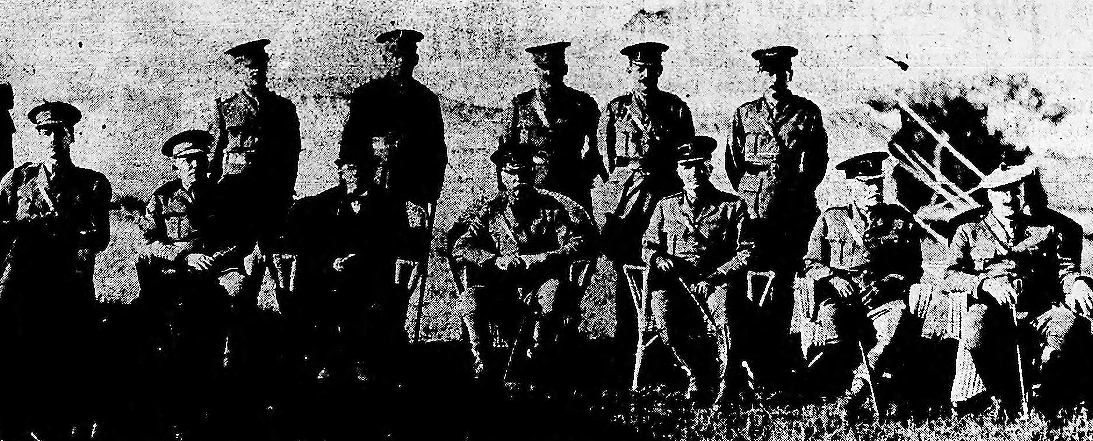 |
 OPCMHVisitor No.: |
HISTORY OF WORK POINT BARRACKSby Jack BatesPART 4 — 1907 to 19181916Daily Colonist FILLING OIL TANKS WITHIN WEEKS Imperial oil Company’s Plant Will be in Operation Soon It is now only a matter of few weeks before a commencement will be made filling the big tanks at McLaughin Poit with fuel oil, according to a statement made yesterday by Mr. Angus M. Abbey, local representative of the Imperial Oil Company. All the tanks are completed, and the final touches are being given to the wharf, so that, as far as fuel oil is concerned, the plant will probably be in full operation within a month. During the past few days a gang of workmen has been kept working day and night on the wharf which is an L shaped structure, reaching out about 150 feet from the shore. The last dolphin was constructed yesterday, and the wharf now begins to assume its permanent appearance. While the Department of Public Works has agreed to dredge the harbor bed in the vicinity of the wharf whenever such dredging should be required, the water is deep enough at high tide to admit the Imperial Oil Company’s tankers when laden to capacity, and by commencing to unload when the tide is at its highest, the pumps will be able to keep pace with the outgoing tide. This will allow the vessels to dock at the wharf during the full process of unloading. The road leading to the plant is still in bad condition, but is being improved as rapidly as possible.The foundations for the stables and several warehouses have been laid, and plans are being made for the erection of the foreman’s residence. When the plant has been fully completed, by next May, the present reservoir at Florence road will be abandoned, and McLaughlin Point will be the distributing centre on Vancouver Island for the Imperial Oil Company. The oil to be stored at the plant will be brought here from Ioco, on Burrard Inlet, where the company’s refinery is situated. The crude material is brought north from Peru. January 9, 1916 Page 5 Reference to that of Lieut. G.L. Armstrong, initially enlisted in the 47th Battalion……He was given a commission on December 21 (1916) and passed his examination at the Royal School of Infantry, securing his certificate. This was the course held at Work Point Barracks otherwise known as the Royal School of Instruction. COLONIST PRINCESS PATRICIAS Farewell Order of Brigadier-General Smith Pays Tribute OTTAWA – Jan. 11 – His Royal Highness the Duke of Connaught has received a copy of the farewell order issued by Brigadier-General W.E.H. Smith, commander of the 80th British Infantry Brigade, upon the transfer of the Princess Patricia’s from the 80th Brigade to the Canadian army corps troops. The order was as follows:
January 12, 1916 MAJOR W. BETHUNE LINDSAY of the Royal Canadian Engineers who was stationed at Work Point for several years as divisional engineer. He was transferred to Winnipeg in December 1912, being succeeded by Major Carey. He now is on active service with the R.C.E.
February 15, 1916 Approved New Line Approval of the proposed change in the harbor line along the foreshore of Macaulay Point, where the Imperial Oil Company intends erecting a wharf adjacent to its oil tanks, was expressed by the inner harbor committee, in a communication to the city council last night. Alderman Todd, chairman of the new harbor committee, expressed surprise that the matter had been referred by the city to the association without instructions to that effect from the Mayor or harbor committee. It has been the standing practice of the council to refer all matters affecting the harbor to the association, and this course was followed in the present instance. February 22, 1916 EIGHT UNITS ARE RECRUITING HERE There are eight distinct military units calling for recruits in Victoria at the present time which is more than at any time since the beginning of the war. The names of the regiments, battalions, or establishments and their respective headquarters follow:
March 5, 1916 FACE GERMAN GUNS BUT FEAR CAMERA Wounded Heroes at Esquimalt Hospital Object to Being Photographed Facing the German shells at Festubert and Ypres is nothing to fifteen invalided soldiers in the Military Convalescent Hospital at Esquimalt, compared with the ordeal of facing a newspaper camera. When a photographer from The Colonist went down to the hospital on Thursday to take the thirty six disabled heroes there, only twenty one could surmount their modesty sufficiently to go out and get into the group. No amount of persuasion on the part of the staff could get the others out, and the picture taken was thus rendered incomplete. On his way back to the hospital with twenty-five other men, after witnessing Mr. F- Stuart-Whyte’s production of “Florodora” at the Princess Theatre on Friday night, one of the soldiers slipped on the frosty sidewalk on Admirals road. The result was a broken leg. Word was sent to the hospital and an ambulance corps with a stretcher went to the scene of the accident, taking the injured man back to the hospital for treatment. The soldier to whom the accident happened has been nursing a wounded arm since his return from Europe a few weeks ago. It was explained that the accident to his leg was due to his efforts to shield his wounded arm. This afternoon, the band of the Western Scots will play at the Convalescent Hospital for the wounded soldiers. If the weather is fine, the concert will take place on the lawn running from the buildings down to the hospital. The men in the hospital are getting ready to take advantage of the spring weather. Already a rowboat has been procured and it is expected that fishing in Esquimalt Harbor will be the sport of the day. March 10, 1916 LEADING PIONEER CORPS Lieut. Col. W.T.H. Holmes Victoria officer who commands the 3rd Canadian Pioneer Corps, formerly the 48th Battalion, C.E.F., which was trained in Victoria and which left England for France on Wednesday.
MILITARY NOTES Advices were received here yesterday to the effect that the 48th battalion, Lieut. Col. Holmes commanding, has left for France. This was my father’s C.E.F. Battalion, he enlisted as a drummer / bugler, current age - 16. March 14, 1916 ESQUIMALT COUNCIL Routine Matters Discussed at Meeting The meeting of the Esquimalt Municipal Council, which was held last night, was devoted almost entirely to routine business. There was a full attendance of councillors, with Reeve Arthur Coles occupying the chair. A letter was read from the Imperial Oil Company, complaining of the condition of Victoria View Road, leading to the company’s oil plant on Maclaughlin Point. It was represented that the road was badly cut up, owing to the recent rains and the heavy traffic, and that some sort of repair was badly needed. The company had several motor trucks to use, but, owing to the state of the road it was impossible to utilize them in any way as their wheels would sink into the mud up to the hub. The engineer had advised the installation of a 10 inch concrete culvert at the cost of $25, and it was decided that the matter should be referred to the chairman of the works committee. Continued .... Military traditionalists will appreciate the next item: A correspondent asks if it is good form for soldiers in uniform to walk with their hands in their pockets. We have always understood that it was not only bad form but contrary to the King’s Regulations, no matter what might be the rank of the soldier. General Eyre, who commanded the Imperial forces in Canada some years ago, objected to officers in mufti walking with their hands in their pockets. This was about the time when the late King Edward, then Prince of Wales, made the practice fashionable in England. It used to be looked upon as purely a “Yankee” habit. March 15, 1916 “The Brazier” is the title of a new newspaper published in the trenches. It is the official organ of the Canadian Scottish, the 16th battalion, C.E.F., and is full of bright and interesting articles contributed by the officers and men. The first issue to reach The Colonist is dated February 15. April 16, 1916 MILITARY NOTES The Royal Canadian Regiment wants more recruits according to a statement made by Major Versturme Bunbury, the commanding officer, yesterday. He said that the overseas draft, which expects to leave for England early next month, is making splendid progress umder Capt. Tweedle and promises to be in no way inferior to the detachments which already have gone from the local community. More men will be required for British Columbia interment camp guards, according to Lieut. Col. Ridgeway Wilson, who is in command of that department. Vacancies have been caused by the enlistment for overseas of many of those engaged in that service. Their places will be filled either by returning soldiers or elderly men able to pass the medical examination, which is not as severe as that provided for those volunteering for the C.E.F. Those employed must be of strict sobriety and will be paid at the rate of $1.10 a day, with 45 cents a day for their wives, if married. Applications should be made at Work Point. There are vacancies for men in No. 21 Company C.A.S.C., old drill hall, Menzies Street. They have been caused by the withdrawal of a draft of officers, N.C.O.’s and men for the 4th Divisional Train, No. 4 Company of which is being mustered in Vancouver. Major Small, O.C. No 21 Co. will consider all applications at his headquarters. This is where my uncle, Robert Frederick Bates, (Frank) joined up and then 6 months later proceeded overseas with the 4th Divisional Train, C.A.S.C. April 16, 1916 (20) Royal School of Artillery Conducted by Major L.W.F. Cockburn
April 16, 1916 (20) Officers and N.C.O.'s, No. 2 Company 88th Battalion
CERTIFICATE OF MILITARY INSTRUCTION The Certificate of Military Instruction to No. 5441 Acting Bomb’r WJ Vincent of No. 5 Coy, R.C.G.A. stationed at Work Point Barracks. Courtesy Richard Linzey. Colonist BEGIN EMPLOYMENT OF WOMEN TYPISTS Two Vacancies at Work Point to be Filled by Young Ladies Major G.A.B. Hall, assistant director of medical services for Military District No. 11, has received authority to engage two representatives of the fair sex as typists at his offices at Work Point. The announcement’s special interest lies in the fact that it is the first time in the history of British Columbia that women have been admitted to a strictly military office for employment. It indicates, incidentally, that the work of the department over which Major Hall presides, as a result of this constantly growing number of returned soldiers, is developing in volume to such an extent that it is necessary to engage extra clerical help. Although only two women are to be admitted to such positions as yet it is believed that this step is the inauguration of a policy which is to be strictly adhered to in the future. In Kingston, Ont., and at Winnipeg, Man., both headquarters of military districts, the practice has been in vogue for a short time and has been found most satisfactory. It has resulted in the release of a large number of young men who are anxious to join overseas units and do their part with the Canadian forces on behalf of the Empire, and, besides, it has given openings to young women in need of the opportunity and in every way competent to perform the purely clerical work in conjunction with such positions. If the change is made at Work Point there are offices in which numbers of capable young men would be released, and it is understood that the local authorities are favourably disposed towards such an innovation. One of the ladies listed in the 1917 directory as a Steno, Work Point, was Helen Wise, who resided at 464 Head Street, the other was Eva Jacobson, daughter of Captain Victor Jacobson of 499 Head Street. The restored historic house and Jacobson Park next door are delightful reminders of an early era in Esquimalt’s history. It would also have been a short walk to Work Point Barracks for both these two pioneering “stenos.” RECEIVE COMPLAINTS REGARDING HOSPITAL Work Point Institution Again Subject of Criticism There have been a number of complaints made from various sources regarding the alleged inadequacy of the appointments at the Work Point Hospital. It has been asserted that the patients are not provided with sufficient coverings to assure cleanliness, and that they lack other necessities. These reports have gained such circulation that some of the ladies of the Red Cross Society have considered the advisability of devoting some attention to the requirements of the inmates of the institution. Major Hall, A.D., of M.P., was asked yesterday in regard to this matter and, while he did not deny the facts recited, he said that what equipment was needed was on its way. The inference was that whatever cause there was for criticism would soon be removed. He also declared that the Militia Department would look after the hospital and that the authorities would prefer not to have the Red Cross Society interest itself. Several months ago the conduct of the Work Point Hospital was the subject of a military enquiry, which was not open to the press. The finding of the board appointed to hear the evidence was submitted to the D.O.C. FIELD AMBULANCE IS NEARING STRENGTH No. 13 Corps, Major Biggar, C.O., Lacks Only Fifty of Full Complement The mobilization of No. 13 Field Ambulance, the new overseas unit quartered at Work Point, is progressing at a rate which is very gratifying to Major C.L. Biggar, the commanding officer, as well as to all other officers and N.C.O.’s of the corps. Although the establishment numbers 250 or more, and the work of organization started only a few weeks ago, a point has been reached where it is possible to say that only fifty more vacancies are available. Those who wish to join this branch of the service should not delay in making their applications. A large number of the officers and men of “B” Section, No. 1 Field Ambulance Corps have volunteered to go overseas with No. 13 Corps under their former C.O. MILITARY NOTES Lieutenant Price, of the Musketry and Machine Gun School, Ottawa, continues to conduct a class of instruction at Clover Point, The representatives of the different local battalions attending thoroughly enjoy this work and are entering into it with spirit. The new rifle range at Heald, Saanich, is reported to be in excellent shape. The ground is absolutely free of water, the targets are in place and everything seems to be in shape for now. Military men are asking each other why the authorities do not take advantage of such a splendid property. “We have reached a stage,” said an officer of the 103rd yesterday “where we could take up musketry to advantage, as yet our men have received no training in rifle shooting. We have only half a dozen or so of the modern type of rifles to distribute among 1,000 odd men, so that it is apparent that the outlook from the viewpoint of one wishing to give the men some experience in shooting, it is not bright. We are hopeful, however, that the department will enable us to do something along this line at an early date. May 13, 1916 MILITARY NOTES The hotels known as the St. Francis Hotel, Yates Street, and the Pandora Hotel, corner Pandora Avenue and Blanshard Street, Victoria, B.C. are placed out of bounds to all troops in Victoria and Esquimalt. St Francis Hotel was at 556 Yates St, Yates Hotel was at 726 Yates St, Pandora Hotel was at 765 Pandora Ave. The Kaiserhof Hotel was at 1326 Blanshard St. June 6, 1916 MORE MEN URGENTLY NEEDED BY R.C.R. Reinforcements for Royal Canadian Regiment Necessary – Local Station A telegram was receive this afternoon at No. 6 Station of the R.C.R. from Colonel A.C.B. Hamilton-Gray, who commands the base depot of the Royal Canadian Regiment in Canada, asking if there were any more men available for reinforcements to the regiment at the front. The Royal Canadian Regiment has suffered heavily in the recent fighting and has been drawing heavily on the base depot in West Sandlin. As a consequence, it is in urgent need of men to fill the places of those who have gone forward. Captain Tweedie, while admitting the strong case in favor of filling up the overseas battalions now recruiting in this city, pointed out that it is of paramount importance to keep the battalions already in the firing line up to their necessary strength, and in this respect the Royal Canadian Regiment has a good claim on any men not already enlisted. Since its very first day in the firing line the Royal Canadian Regiment has made a name for itself as a first class fighting unit, but is beginning to feel the need for more men to carry on the good work already so ably started. Any men now joining the regiment for overseas service will be sure of leaving Victoria inside of a month. They will be attested on the usual C.E.F. attestation basis and not, as heretofore, on the three year service always called for by the permanent force. Recruits will be taken on at Work Point Barracks at the orderly room of the Royal Canadian Regiment. Particulars can be had at the recruiting office at the corner of Trounce Alley and Broad street, opposite the office of The Colonist. June 7, 1916 INFANTRY SCHOOL TO OPEN JUNE 19 Major E.A. Seely Smith, G.S.O., Discusses new Arrangements for Instruction The new school of instruction for officers and N.C.O.’s, which will be opened at Work Point on June 19, will not be inaugurated with the full membership of 200, according to the rate in which applications for admission are now being received. Major F.A. Seely-Smith, the D.S.O., yesterday said that an effort was being made to secure quarters sufficiently large and otherwise satisfactory, within the bounds of the barracks. He could not say whether this could be done, but he thought if ti was at all possible. It would prove a much better arrangement than allowing probationers to obtain board in the city. An important amendment has been received to the regulations under which the school is to be operated. It is provided that all probationers from C.E.F. units shall receive the same pay while at the school as they get for service in their respective battalions. In other words, they will be paid the amount to which their ranks, or their special duties in the C.E.F. entitle them, instead of the flat rate of $1.10 a day which originally was intended. Representatives of the active militia regiments, however, will enter the school on the same basis as was announced, namely, they will receive no remuneration whatever while undergoing instruction. Major Seely-Smith announced also that Major Versturme Bunbury, who has been in charge of the Royal School of Infantry, will be at the head of the new school, and that among the members of the instructional staff will be Lieut. Compton, Sergt. Major Instructor Coffin, Sergt.Major Instructor Youngman and Sergt. Mitent, of the 6th Regiment, D.C.O.R. The G.S.O. stated that the instructors would be augmented from time to time by officers returning from the front, who would give their attention to special work. June 16, 1916 MILITARY NOTES The wearing of a uniform of red and blue, which is required by those attending a school of infantry such as that opening at Work Point next Monday, has aroused some criticism in Ontario. It is stated that a movement is on foot to give probationers the privilege of continuing to wear their C.E.F. uniform while in attendance at school. One military writer says: “There are a great many drawbacks to the red uniform which will justify the change. In the first place, in the summer it is unbearably hot. There does not seem to be one advantage in making the probationers wear uniform which has been condemned and discarded and now ordered for those who are trying to qualify themselves for something higher in the army. If the authority is granted for the discarding of the red for the khaki, there would no additional expense to the Militia Department. It simply would mean that the soldiers could continue to wear their traditional uniform while attending the school, instead of having to lay it aside and use red.” While the red uniform will not be popular in British Columbia among those who have to wear it, there is no doubt that civilians will be pleased to see it. Officers and men in scarlet will give a touch of color to the streets of Victoria that will materially add to its attractiveness and, unquestionably, make the city of more interest to tourists. The appearance of scarlet tunic and blue breeches will suggest the old French uniform reversed, and, if those on whom they are displayed will bear in mind that a real public service is being rendered in giving the city a picturesque tune, it is doubtful whether there will be any military disturbance over the innovation. June 18, 1916 VESSEL MOVEMENTS NOTICE TO MARINERS (164) Vancouver Island – Southeast Coast – Victoria Harbor – McLoughlin Point Location: The Imperial Oil Company has constructed a wharf at a point 140 yards to the northward of McLoughlin Point for the supply to vessels of fuel oil. Lat. N. 48 deg. 25 min. 13 sec., Long. W. 123 deg. 23 min. 44 sec. Description – The wharf extends out 150 feet from the shore, and is L shaped, the end of the wharf being 50 feet long and 40 feet wide. There is a depth of 20 feet at low water at the end of the wharf. Oli tanks – The Imperial Oil Company’s station is located between the Victoria new road and the wharf, and consists of storehouses, offices and tanks. At present there are 4 tanks erected, the largest, which is conspicuous, containg 1, 250,000 gallons of fuel oil; eventually there will ten tanks at this station. June 22, 1916 MILITARY NOTES The statement that the members of the new Royal School of Infantry, Work Point, are to receive khaki uniforms for ordinary duty is not correct. They are being given a fatigue dress consisting of a khaki shirt and trousers in addition to their uniforms of scarlet and tithe. June 22, 1916 Pte. ARTHUR J. GUEST
He was later commemorated by a tree planting ceremony at Lampson Street School May 2, 1917. The Guests were great friends of my grandparents William T. and Kate Phillips. ROYAL CANADIAN ENGINEERS
COLONIST
One of the original Royal Engineers “Sappers” to come to Victoria in 1858, he died July 22, 1920 and is buried at Ross Bay Cemetery, one of four of those originals buried there. See 1882 for a photo of his band at Beacon Hill Camp. July 18, 1916 MILITARY NOTES Forty more men are needed by the 5th Regiment, C.G.A. Applicants should present themselves at the regiment’s headquarters, Work Point. July 22, 1916 WILL INSPECT TROOPS AT SIDNEY H.R.H. Duke of Connaught to Visit Island Training Centre on Monday H.R.H. the Duke of Connaught will visit the Esquimalt defences on Monday morning. The details of his programme have not been made public, but it is understood that he will go to Work Point barracks, to the Signal Hill battery and to the Esquimalt naval yard. It also is possible that he will spend a short time at Fort Macaulay. In the afternoon the Governor General will visit the Sidney concentration camp. He will inspect the 1,500 troops in training there, and is understood to have expressed himself as specially interested in this part of his local activities. This is explained by the fact that at Sidney is th 143rd battalion, the only overseas bantam force in Western Canada, as well the 231st, Seaforth Highlanders, which includes a contingent of volunteers from the Yukon – stalwart men who have enlisted from widely separated parts of the vast northern territory by Commissioner Black to take their places with the C.E.F. in the trenches. MILITARY NOTES There still are vacancies for men in the Canadian Army Medicak Corps, the strength of which unit was seriously depleted by two drafts which have left recently for England. Opportunities for enlistment also are presented by the R.C.R., Work Point, which is dispatching a draft next week; by the 5th Regiment C.G.A., Work Point, which has not yet reached strength after its contributions to the 15th Brigade, C.F.A., by the 88th Victoria Fusiliers, which wants men for home defence; and by 6th Field Company, Canadian Engineers, which wants men for special overseas service. There should be a place for everyone of military age and medically fit somewhere in this list and especially when it is remembered that both the 143rd, B.C. Bantam, and the 231st, Seaforth Highlanders, Sidney, always are prepared to welcome recruits. COLONIST Duke Inspects Guard of Honour On His Arrival
July 23, 1916 Victorians at Beacon Hill Camp 50 Years Ago
COLONIST Officers at Sidney Review
Also on this page there is an interesting article on the Seaforths and the Bantams training at the Sidney Camp. July 30, 1916 SHOWED KEEN INTEREST IN SOLDIERS WOUNDED IN THE WAR Photo not available. Duke of Connaught on steps of Esquimalt Military Hospital, which he visited on Tuesday, July 25. COLONIST VICTORIA CONNECTED BY CABLE 50 YEARS AGO NEWS OF LAYING ATLANTIC TELEGRAPH RECEIVED HERE WITH ENTHUSIASM – Fifty years ago last week Victoria celebrated amid rejoicing, the laying of the cable across the Atlantic, which undertaking made it possible for the city to receive telegraphic news direct from England. Several months prior to that Victoria had been entirely isolated from the rest of the world in a telegraphic sense, as it was only in the spring of the year 1866, that a British gunboat completed the laying of a cable across the Straits to the mainland. The day after the Atlantic cable had been laid, Victorians subscribed $75 to enable the following congratulatory message to be dispatched from Mayor Lumley Franklin, of this city, to the Lord Mayor of London:
In announcing the sending of this communication, the Colonist of July 29, 1866, says:
Throughout the year 1866 a party was busily engaged in laying the cable across the interior of British Columbia. With regard to the work done in that respect the late Mrs. McMicking has furnished the following records of her late husband in that connection.
August 2, 1916 OVER 10,000 HAVE GONE FROM VICTORIA Most Westerly City of Canada Has Splendid Record in Respect to Its Ten thousand two hundred and forty-two officers, N.C.O.’s and men have left Victoria for England, en route to take their respective places with Canada’s fighting forces in the British Army, since the beginning of the Great War. This total is arrived at from statistics obtained from the records available at Work Point, the headquarters of District No. 11. It is not pretended that the figure is absolutely accurate because it is possible to arrive at a mathematically correct computation from the information at hand except by going through the lists and checking off every individual who has been trained and dispatched from this port. Roughly, however, the figure may be accepted as a very close approximation of the strength of the military forces sent forward from this city to complete their training in the old country preparatory to leaving for the continent. It is not intended to assume for Victoria credit for the contribution of 10,242 officers and men. They were recruited both from the city and from the adjacent cities and in the cases of some units, brought from all sections of the province. On the other hand it is pointed out that there must be a large representation of the youth of the community unrepresented in these statistics. The 47th Battalion, C.E.F., Lieut.-Col. W.N. Winsby, commanding — himself a resident of the city — which is rated as a New Westminster unit, has in its personnel a large number of the young men of this city, most of whom went from the 5th Regiment, C.G.A., in order to remain with their old C.O. The 102nd Battalion, too, recruited here with success. The 65th Field Co., Canadian Engineers, has been taking men from Victoria for months, and continues to do so, but there is no way of saying just how many can be accounted for in this way. Victorians, left to serve in the British Army, to train for the Royal navy, to “do their bit” as members of the British Naval patrol Service, or to enlist with other branches of the empire’s now vast armies. The First Volunteers Within a few weeks after Great Britain declared war on Germany there were, in round figures, 575 officers and men from Victoria en route to Valcartier to train to take their places on the firing line. How gallantly they did their duty, how bravely they gave their lives for their country and how signally they justified their faith of their fellow citizens are matters of historical record – a record that will ever remain fresh in the minds of Victorians. With the officers of the 5th Regiment’s detachment was Capt. R.P Clarke, now holding the rank of Lieut.-Col. in the C.E.F.; Capt. The Rev. Wm. Barton, chaplain of the famous 7th Battalion, C.E.F.; Capt. P.T. Stern, who served at the front and now holds the rank of major and second in command of a Montreal overseas battalion; Lieut’s R.H. Bovill and W.B. Shaw, C.F.A. Of the officers of the 50th regiment, Gordon Highlanders, there were Brigadier-General A.W. Currie, since advanced to the rank of Major-General in command of the 1st Canadian Division and accorded the honors of Companion of the Bath and the Cross of the Legion of Honor; Major Garnet Hughes, now a Brigadier –General with the decoration of D.S.O.; and Lieut.—Col. Lorne Ross, who, after being wounded in action, returned to Victoria, mobilized the 67th battalion, Western Scots, and took it to England. The officers who went with the 88th Fusiliers draft, Capt. R.V. Harvey and Lieut’s H.B. Boggs, H.A. Bromley and N.A. Jessop, have made the supreme sacrifice, falling in action in some of the heaviest engagements in which Canadians participated. Major P. Bing Hall is a prisoner in Germany, being taken after the gallant defence of a position which had become surrounded. Capt. R.C. Cooper, after months of hard service, has been given important duties in connection with the training of Canadian troops, and Lieut. H.C. Macdowall is in German hands. The District’s Contribution Following is a complete list of the overseas units which have left British Columbia since the outbreak of war: Grand totals: 773 Officers 21,092 Other Ranks 22,764 Total. MILITARY NOTES More men are urgently needed by the Royal Canadian regiment at Work Point. This unit sent away a draft of 20 men last Monday who will go to Halifax, N.S. and from there to England whence they will be sent, with others, to reinforce the R.C.R. battalion firing line. Recruits are required to fill their places and applicants should present themselves in person at the barracks. To visit Work Point Barracks these days is like another glimpse of conditions as they were prior to 1906, when the Imperial forces were in charge of Canadian defences. ‘Red Coats” furnish the guard now, which is something that has been lacking for many months. They are members of the Royal School of Infantry, who are being trained to hold commissioned rank in the C.E.F. COLONIST THE DISTRICT’S CONTRIBUTION Following is a complete list of the overseas units which have left British Columbia since the outbreak of the war:
August 6, 1916 MILITARY NOTES Col. J. Duff Stuart, the D.O.C., is at the Vernon concentration camp and will return to Victoria in the course of a few days. Major E.A. Seely Smith, the general staff officer, who has been inspecting the troops in training at the Vernon concentration camp, is expected back shortly. Lieut. Col. C.A. Forsythe, commanding the 50th Gordon Highlanders, is in the hospital to undergo a serious operation. The 5th Regiment, C.G.A., is recruited almost to full strength again. There are, however, a few more vacancies and applications will be received at Work point. The Willows camp, which has been deserted since the mobilization of the Island Forces at Sidney, is to be occupied again almost immediately, it being the intention to establish a detachment of the 5th Regiment, C.G.A., there. Among all military, as well as among some enthusiastic civilian marksmen, the news that the Saanich rifle range is to be opened without delay has been received with every indication of gratification. In their opinion the change from Clover Point cannot be made to soon. The appointment of a military board to inspect the new range, it was stated yesterday on good authority, means that it is to be thrown open for the use of officers and men now at Sidney. The inauguration of shooting in Saanich, however, must not be taken as indicating that the Clover Point range will be closed. The latter is expected to be maintained at least for the duration of the war. November 27, 1916 Want Lights to Maclaughlin Point The Esquimalt council received a communication from the Imperial Oil Company last night requesting that a light be placed midway between Malvern Street and the plant on Victoria View Road, leading to Maclaughlin Point, as the road was now dangerous for traffic at night on account of the darkness. The council considered that the undertaking would mean a considerable outlay, as it would necessitate the erection of four or five poles, and one light would not be sufficient. An estimate will be secured from B.C. Electric, and the Imperial Oil Company will probably be asked to contribute its share toward the cost. |
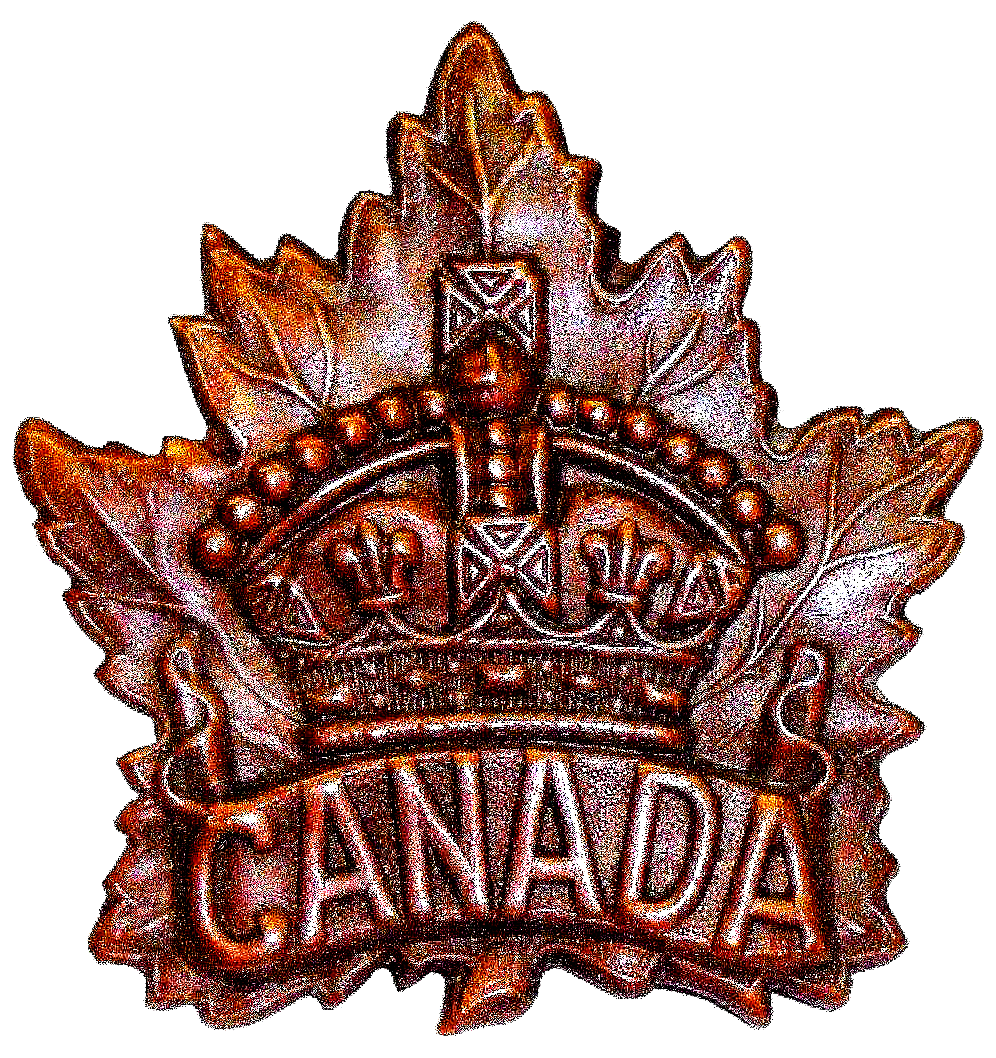
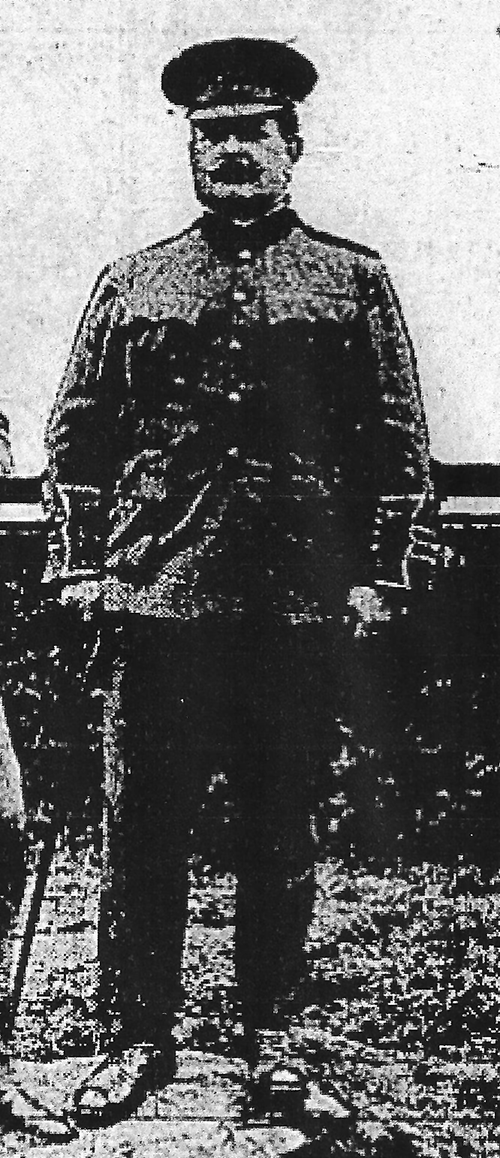
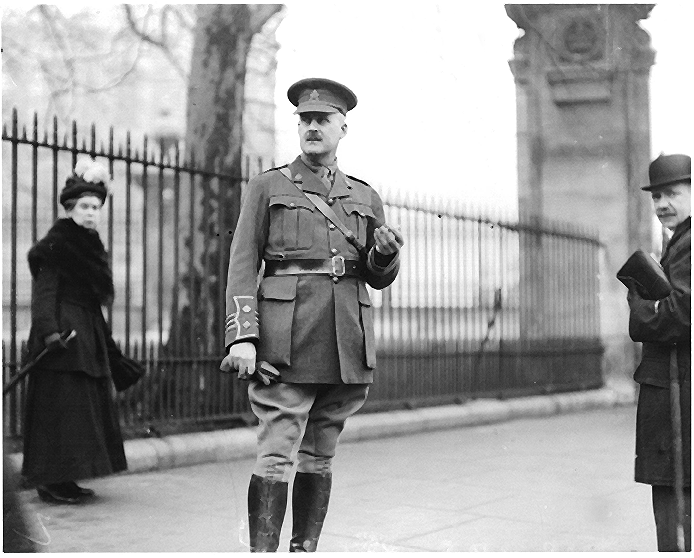
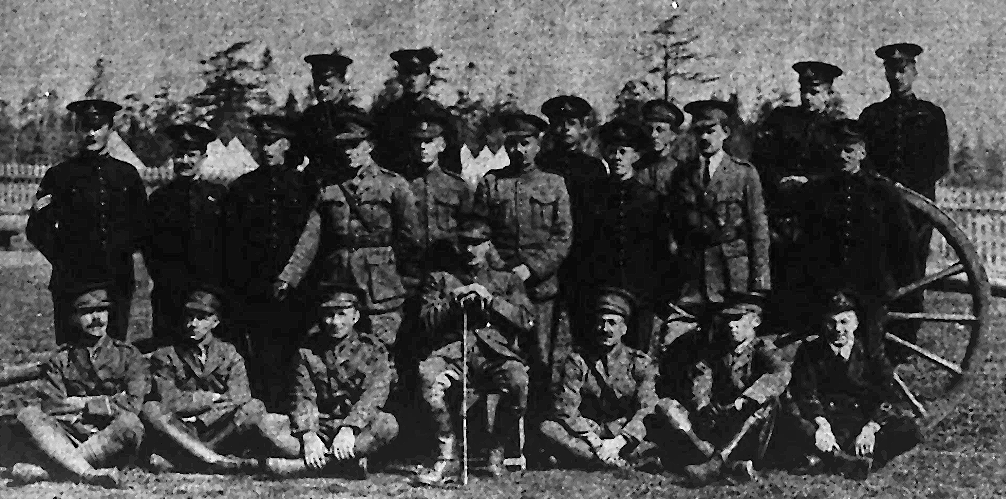
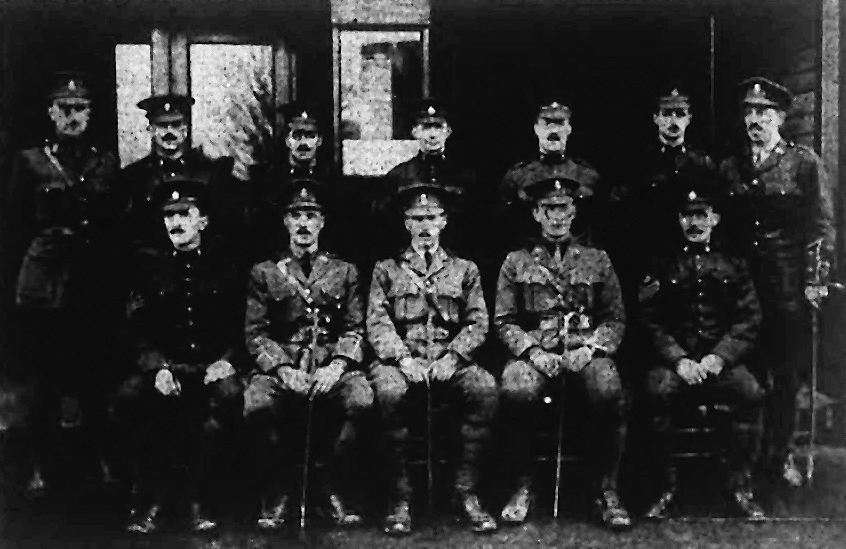
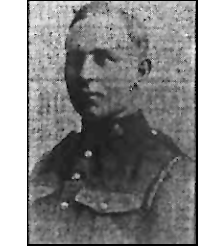 Member of the 1st Pioneer Corps who is reported to have been killed on June 12. Mrs. F. Guest, of Fraser Street, Esquimalt, received word to that effect yesterday. Pte. Guest was born in Victoria West twenty one years ago and lived in Esquimal district practically all his life. He was educated at the Imperial Army School, Work Point, and when his father left the Imperial forces after twenty two years service, he attended Lampson Street School. Prior to enlisting he was employed in the engineering branch of the E & N Railway, at Russell Station. His father, Capt. and Quartermaster F. Guest, left with the 30th Battalion and is now at Bramshott, England. His brother Sergt. F. Guest is serving at Shorncliffe. He leaves a widow and a young child.
Member of the 1st Pioneer Corps who is reported to have been killed on June 12. Mrs. F. Guest, of Fraser Street, Esquimalt, received word to that effect yesterday. Pte. Guest was born in Victoria West twenty one years ago and lived in Esquimal district practically all his life. He was educated at the Imperial Army School, Work Point, and when his father left the Imperial forces after twenty two years service, he attended Lampson Street School. Prior to enlisting he was employed in the engineering branch of the E & N Railway, at Russell Station. His father, Capt. and Quartermaster F. Guest, left with the 30th Battalion and is now at Bramshott, England. His brother Sergt. F. Guest is serving at Shorncliffe. He leaves a widow and a young child.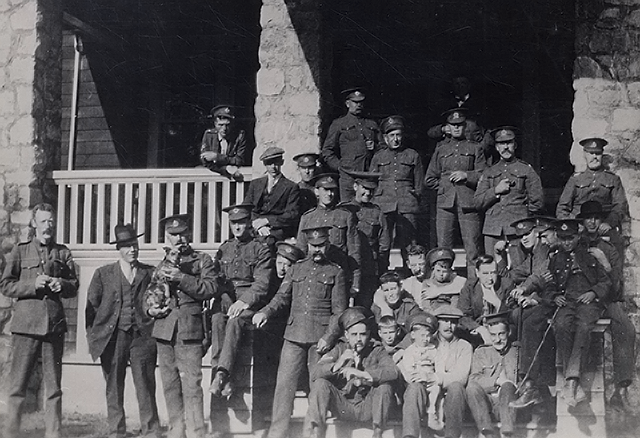
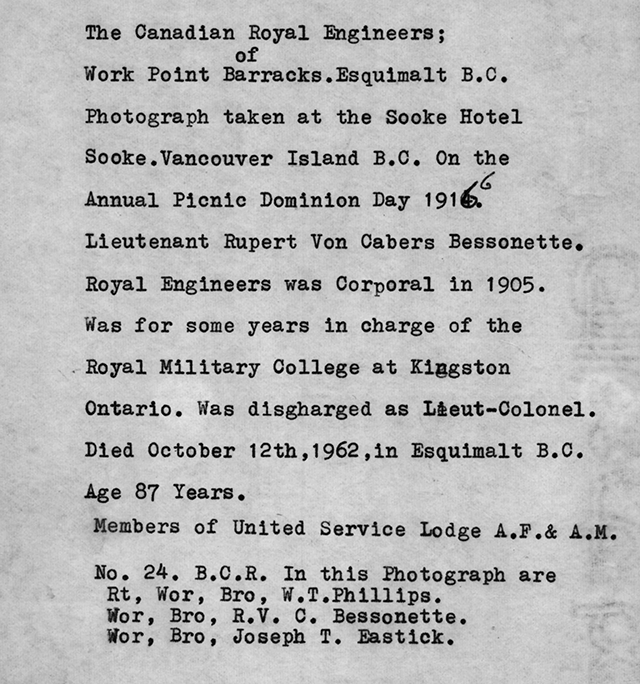
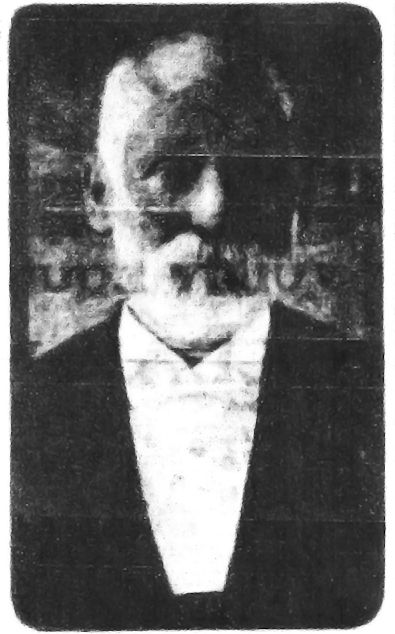
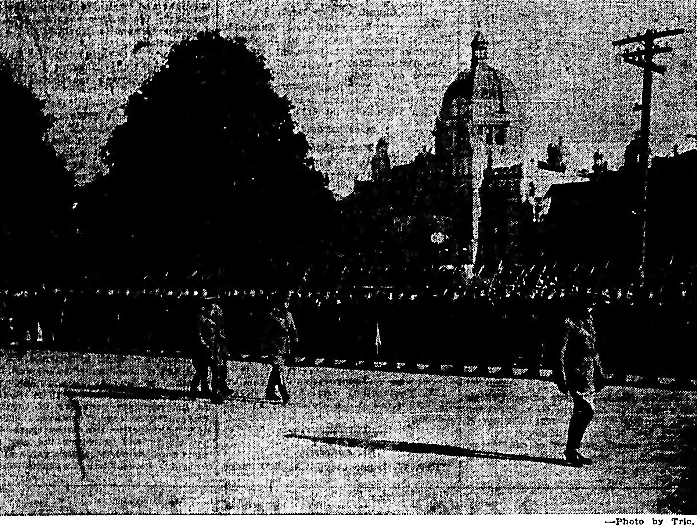
-3.png)
